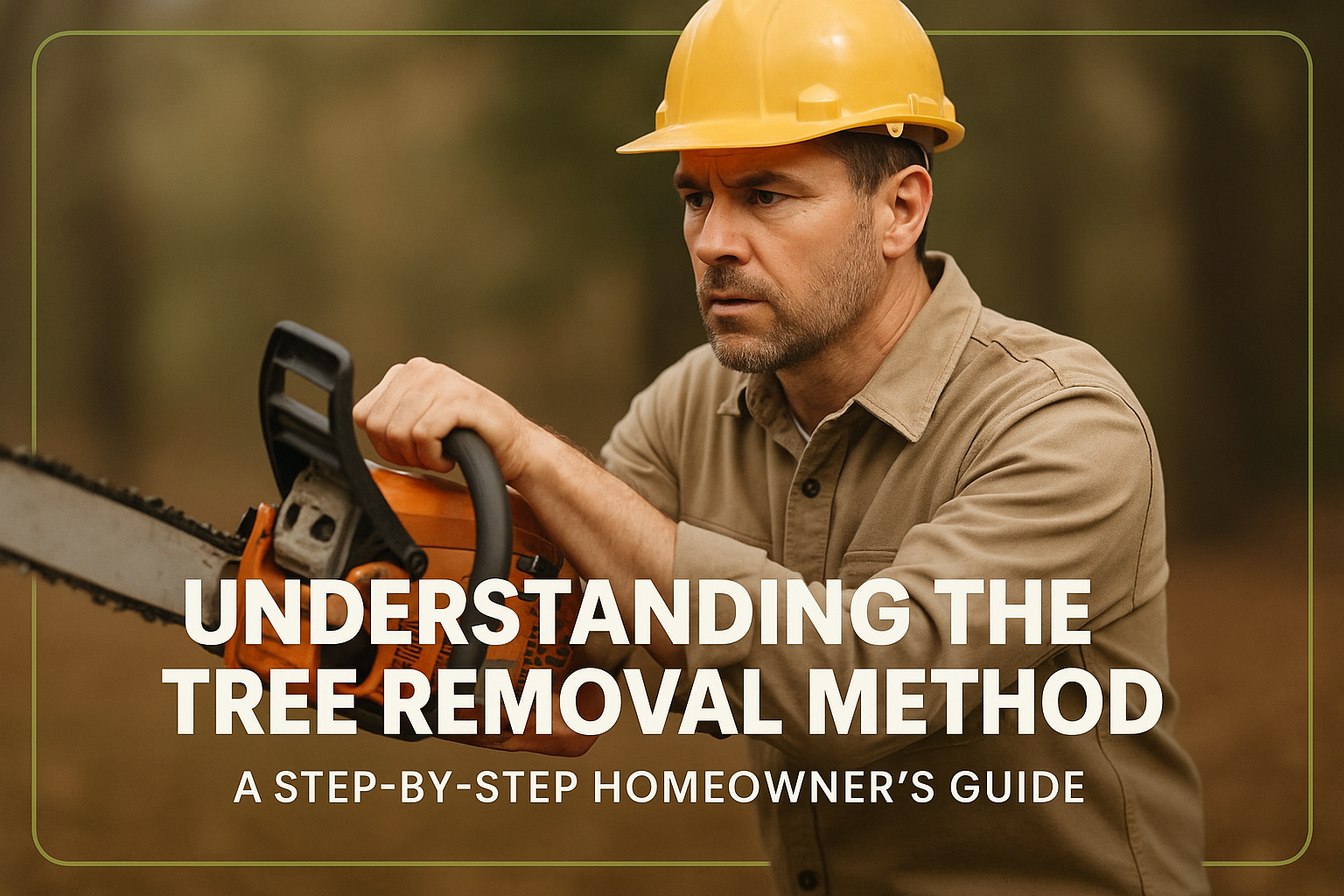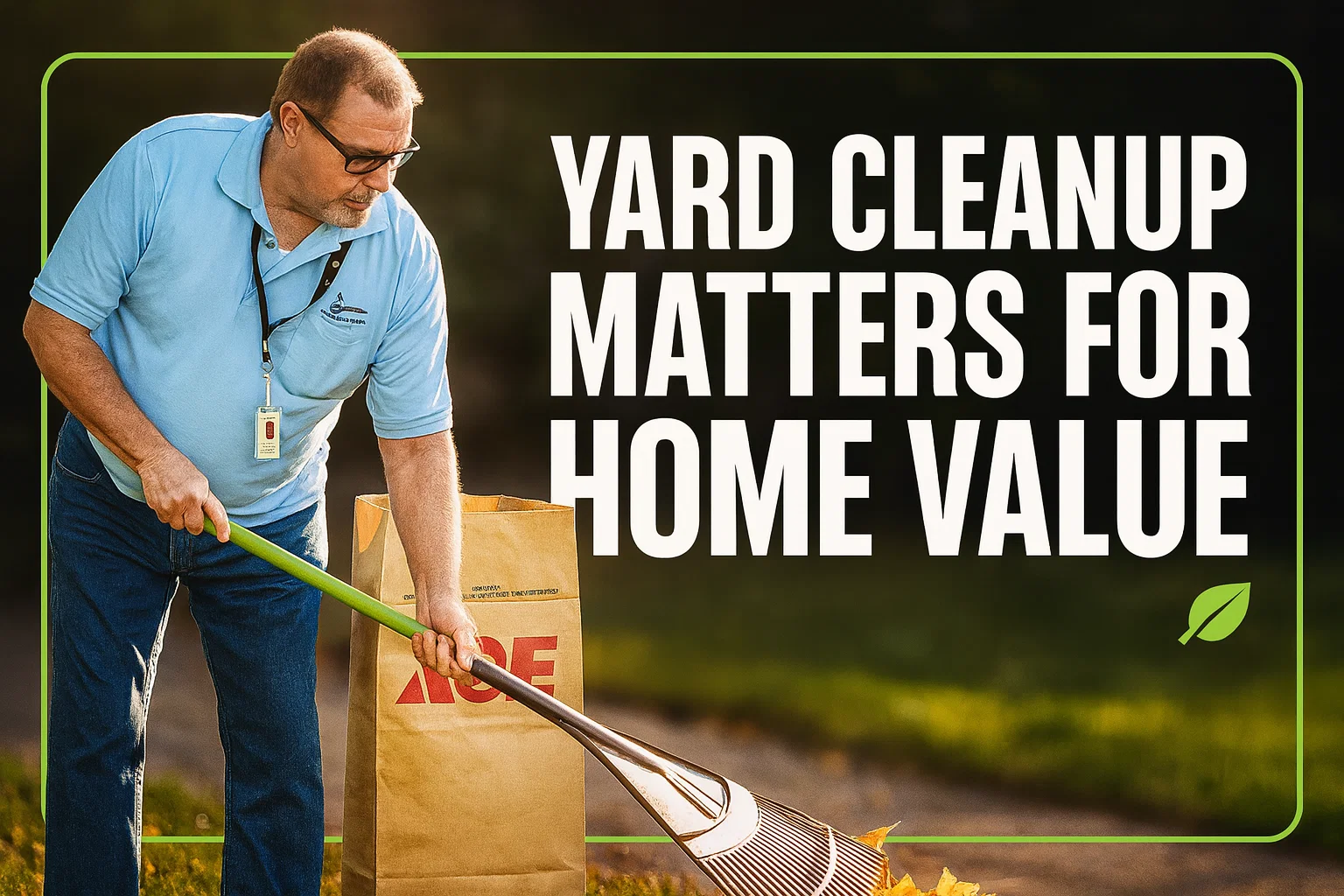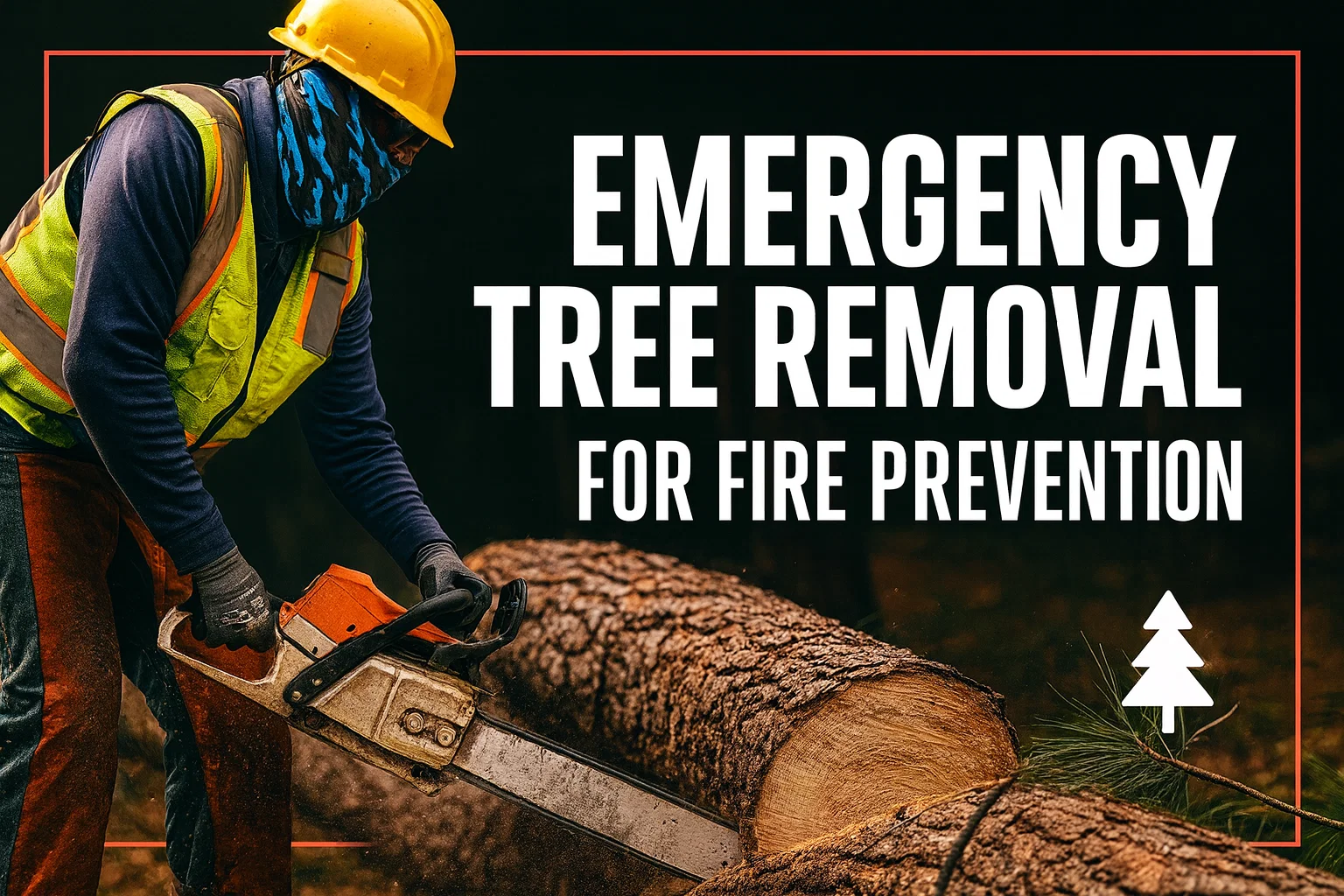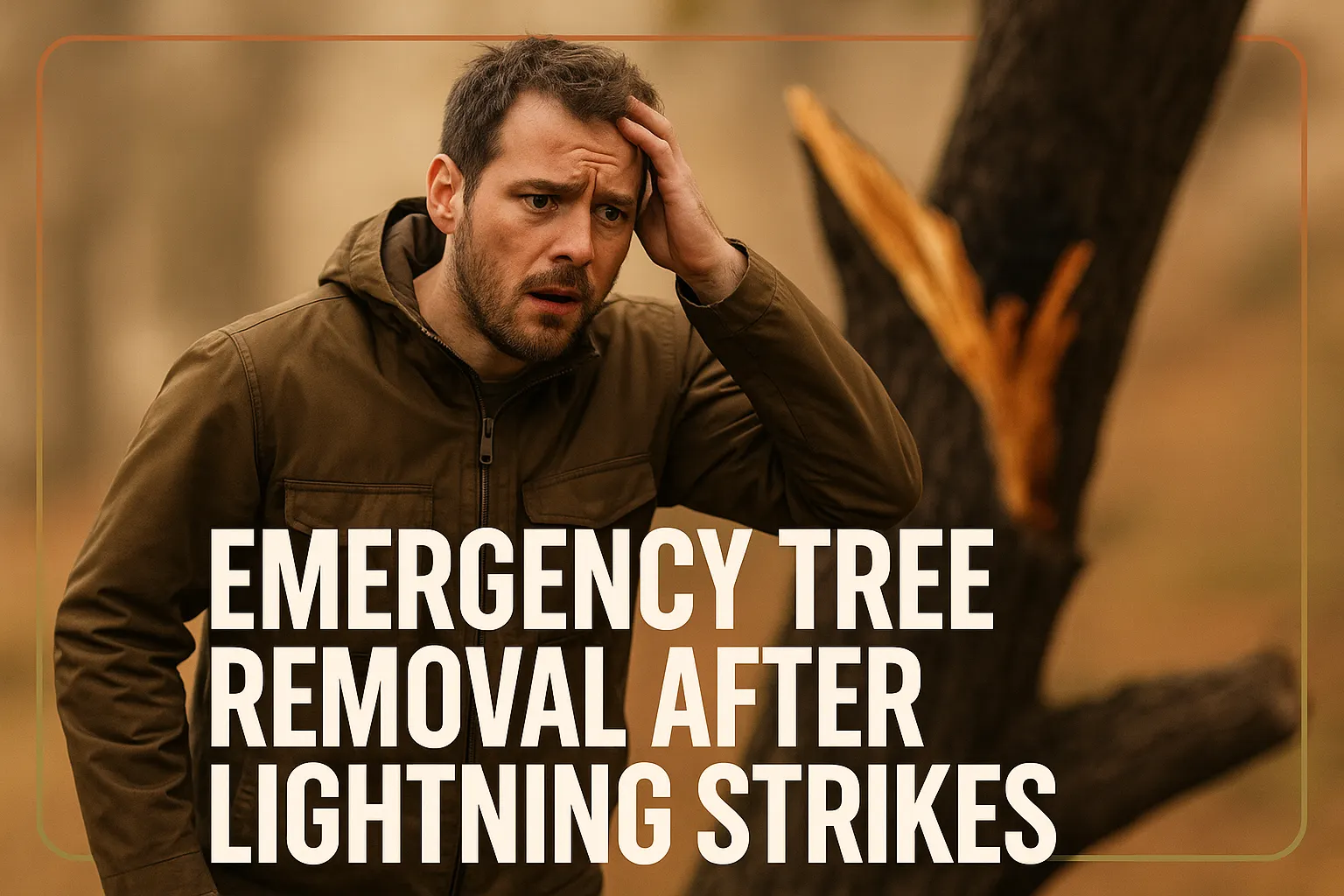Homeowners who are concerned with making sure their safety, efficiency, and regulation are maintained should understand the process of removing the trees. A proper approach will depend on many things: the size of the tree, the place where the tree is situated, its condition, and the dangers that the tree may pose. Understanding the various possible ways of tree removal methods, including both the traditional method that entails cutting down trees and the sectional removal that includes removal by a crane and removal by small, manageable trees, assists homeowners in making the best decisions as to whether to hire the professionals or to look at the possibilities of doing it themselves.
Some of the reasons that lead to tree removal include preventing disease spread through tree-health management, structural instability, tree-hazard, due to dead or diseased trees or storm damage, and other reasons. It starts with an in-depth evaluation and then permits are obtained, the site is prepared, safe removal is carried out and lastly stump removal and cleanup of the site. Regardless of whether he employs professional services or just makes a small DIY project, it is important to know the mode of tree removal and the safety measures to employ in order to ensure there is a successful and safe tree removal.
Signs That Indicate Tree Removal is Necessary
Dead and dying trees tend to lose their balance and be a risk of falling, which may be dangerous to both human life and property. Sick trees may transmit diseases to the surrounding healthy plants and, therefore, their eradication is critical to ensuring the general environment. Any structural damage, such as cracks, splits, or unsteadiness in the trunk or the trunk it prone to collapse. Lean trees could be very dangerous and indicative of imbalance.
Damage to the roots of foundations or underground utilities is another important cause of clearing trees. Damaged trees, whose branches are broken off or uprooted, should be evaluated after storms and in most cases, they are removed to prevent accidents.
Dangerous Tree Removal Situations
The presence of trees around power lines is potentially extremely dangerous in terms of electrical risks in case they fall, so they should be removed by professionals. The trees that pose a threat to buildings, fences or any other structure should be cleared to prevent expensive destruction. The ones that have considerable decay or weakening due to illnesses are weak and dangerous. Removal of trees due to untenable weather conditions or where the soil is unstable and therefore necessitates emergency removal of trees, so that lives and property are saved.
Diseased Tree Removal Considerations
Some diseases of trees, including root rot or bacterial infections, require that trees be removed to prevent the transmission of the disease to other healthy trees. Quarantine and disposal procedures should be conducted correctly in order to prevent infections and contamination. The harvest of sick trees is done with care to save as much harm as possible to the rest of the landscape and keep the entire ecosystem healthier.
The Complete Tree Removal Method: Step-by-Step
Initial Assessment and Planning
It initially refers to a keen examination of the area to determine the health of the tree, its size, placement and any other potential obstacles. Power lines and buildings or underground utilities are the hazards determined to be safely removed. The height and diameter of the tree can be measured to identify the equipment and method to be used. Taking all these into consideration, an elaborate removal strategy is formulated so that efficiency and safety are maintained in the process.
Obtaining Permits and Approvals
Local regulations should be checked before removal in order to find out the required permits. There is also a likelihood of homeowners having to obtain the permission of their Homeowners Association (HOA) where necessary. The utility companies are supposed to be informed whether the tree is close to power lines or underground cables. The knowledge of the schedule of these approvals will help the project to be carried out without any legal or regulatory setbacks.
Site Preparation
The site preparation entails clearing the area of work of obstacles and debris. Safety perimeters are created in order to protect people and property in case of any falling branches or equipment. Protective barriers are used to surround property when necessary. Equipment is positioned in a strategic manner to ensure easy access and neighbors are informed of upcoming work in order to ensure that there is good communication and safety consciousness.
Tree Removal Execution
The real process to be done begins with the limbing, which is the cutting off of smaller branches. The trunk may then be torn page-by-page particularly in tabloid areas or close to the buildings. In cases where space permits, the tree is felled in a controlled manner, whereby the tree is brought down safely. The methods of rigging and lowering are used in which large parts are directed downwards using ropes and pulleys. Safety standards are very important to observe at this stage in order to avoid accidents.
Stump Removal and Cleanup
Following the removal of the tree, there are some alternatives to the stump removal whereby the stump can be ground or the entire root can be removed. One of such common techniques is stump grinding which crushes the stump into the ground into a fine state. Roots can be shaved in order to avert new growth or damage in the future. Everything is cleaned up, and the area is put back, and in most cases, the soil is made level or new trees are planted so that the property is clean and safe.
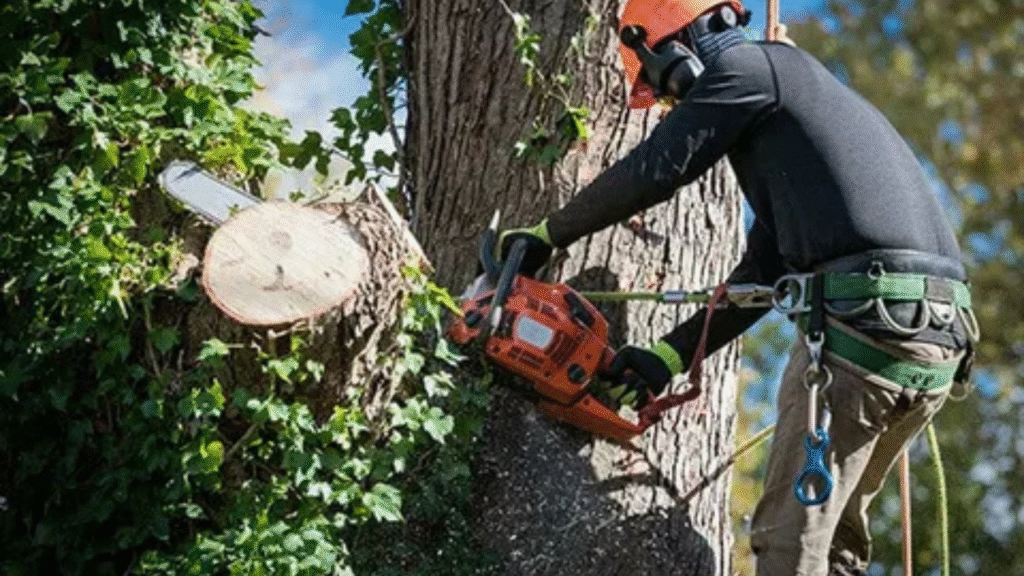
Tree Removal Methods: Choosing the Right Approach
Traditional Felling Method
Suited to open-space removals, which are straight. Applicant requires space and skills and cuts in a direction. The benefits are that it is efficient under appropriate circumstances; the drawbacks are that it is dangerous when not done correctly.
Sectional Dismantling (Piece-by-Piece Removal)
Suitable for confined areas or near structures, involving rigging and ropes for controlled section removal, safer where space is limited.
Crane-Assisted Tree Removal
Best used on large trees or those difficult to access, efficient but more expensive, heavy equipment must be installed.
Emergency Tree Removal
Quick action in case of storm damage or dangerous cases usually needs 24/7 services along with quick assessment and precaution measures.
Best Methods for Different Scenarios
| Scenario | Recommended Method | Key Considerations |
| Urban | Sectional dismantling | Limited space, safety near structures |
| Rural | Traditional felling | Open areas, larger trees |
| Large Trees | Crane-assisted | Heavy equipment necessary |
| Challenging Locations | Specialized techniques | Near buildings, water, or slopes |
Tools and Equipment
- Essential Tools
Chainsaws, pole saws, rigging gear, safety PPE, stump grinders.
- Heavy Machinery
Cranes, boom lifts, wood chippers, skid steer loaders.
- Safety Equipment
Helmets, harnesses, face shields, and communication devices.
Costs and Safety Protocols
- Cost Factors
The size of trees, their location, their condition, removal of stumps, debris removal, and emergencies.
- Accurate Estimates
Obtain various quotes, enquire on included services, and inquire on site evaluations.
- Safety Standards
Adhere to OSHA regulations, pre-job safety briefing, creating the fall areas, weather surveillance.
DIY Tree Removal: When and How
Suitable Small Trees
Self-removal of trees is technically suited to small trees whose sizes allow them to be handled by non-professionals. The trees must be small in size so that they can be managed with minimal equipment and skills without causing a lot of harm to property and personal safety.
When to DIY
DIY removal should only be considered when the tree is small, is of low risk and when the person has some experience in using cutting tools safely. Determine the size of the tree, its proximity to structures or power lines and whether you feel comfortable with doing the job or not. In cases of bigger or dangerous trees, it is highly advisable to consider the assistance of professionals.
Basic Steps
Begin with an assessment of the immediate environment with regard to hindrances, facilities as well and escape pathways. Prepare adequate equipment, such as safety equipment like gloves, a helmet, and protective eyewear. Be careful how you cut the tree so that it falls in a proper direction. Start by cutting branches and then make accurate cuts at the base to control the fall of the tree. With the cutting and clearing of branches and trunk sections, it is safe to handle debris after felling.
Common Mistakes
Most of the DIY removals do not succeed because they underestimate the weight and fall pattern of the tree, thus causing accidents. Poor cutting mechanisms may lead to their uncontrolled falls. Failure to search around utility lines presents hazardous conditions. Lack of adequate safety gear and inadequate planning expose an individual to the possibility of getting injured which highlights the importance of planning.
Conclusion
The right interpretation of the tree removal process is a guarantee of safety, compliance and effective output. The ability to know when a tree is to be cut off and the right way to do it will help avoid accidents and destruction. Although professional tree removal is safer and expert, small projects could be recommended but only when handled with caution by DIY. Safety, proper planning and strict adherence to regulations should always be of priority.
To receive professional help and choose the right option to remove a tree in a particular situation, contact Alexa Tree Services to obtain an elaborate estimate of the tree removal method and expert advice.
FAQ’s
A: The trees must be cleared in case they are dead, diseased, unsteady, leaning over, and harming property or utility.
A: Homeowners can use appropriate instruments and expertise and remove small and low-risk trees. Professionals are needed for the bigger or riskier trees.
A: Often yes. Local laws and HOAs can demand permits, particularly for protected trees or large trees.
A: Prices will differ depending on the size, place, and condition of trees, as well as the process. Removals of cranes and emergencies are generally more costly.
A: Some of the common ones are traditional felling, sectional dismantling, crane-assisted and emergency removal.

